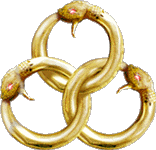COMBAT OVERVIEW
FLaK combat is executed using either rattan or polypropylene (at opponent's consent) weapons. This simulates the weight and feel of a steel sword, without incurring the dangers of using a waster or live-steel, allowing FLaK combatants to fight intensely and realistically with greatly-reduced risk of injury.
Weapon strikes are calibrated to penetrate or damage armor enough that the underlying "meat" has been injured or ruined. Thus, FLaK weapon strikes are quite forceful and akin to getting hit with a baseball bat. Understanding how to deliver as well as how to take a blow is crucial to the learning process. Students will pick these skills up during sparring practice or classes where strikes are delivered to armored areas.
Fight Like a Knight follows a series of rules and customs that, while making the engagements slightly less realistic, keep combatants safe and prevent thuggishness. FLaK technique emphasizes the beauty, elegance, and grace inherent in swordfighting, and our rules and customs reinforce that as much as possible.
RULES
- An individual combatant is responsible for declaring him/herself dead, thus losing the battle.
- The recipient of the blow will determine if it landed with enough force to cut through the armor and kill/wound.
- Any sufficiently forceful blow to the head, torso, or inner-thigh is a kill.
- If a combatant’s arm is struck with an adequate blow, the combatant loses the use of the struck arm and must fight with a single weapon, tucking the injured arm behind his/her body.
- If a combatant’s leg is struck with an adequate blow, the combatant loses the use of the struck leg and must fight from his/her knees - he/she can move around but can no longer stand.
- If a combatant’s hip is struck with an adequate blow, the combatant loses the use of the entire lower half of his/her body and must kneel, sitting on his/her feet - he/she can not move at all from the waist down.
- Blades of weapons cannot be grappled.
CUSTOMS
In order to keep combatants safe and uninjured, FLaK members agree to abide by the following customs:
- Arms, while inevitably getting hit on occasion, are never targeted - too much bone close to the surface that can easily be broken even through adequate armor.
- Knees and below are also never targeted for the same reason as above.
- The recipient of the blow has the final say in the quality and efficacy of the blow.
- Shields will never touch your opponent’s body.
- Basket-hilts/hafts will never touch your opponent’s body.
- A fallen opponent is asked to yield rather than be attacked.
- Slow-work and sparring will only go at the speed and intensity agreed upon by your partner.




























